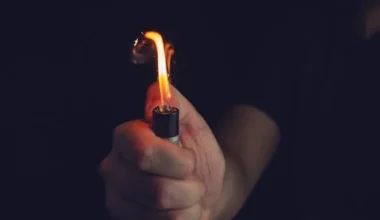We’ve all been there. A beautiful backyard, a perfect picnic spot, but those pesky sprinkler lines are just not in the right place! They hinder the grand vision for a dreamy garden or perhaps, disrupt your plan to pitch that new tent you’ve got.
So here we stand, staring at our lawn, contemplating the conundrum of moving these snake-like invaders. Fear not my keen gardeners and avid outdoors folks! I am here to guide you to de-mystify the intricacies of how to move sprinkler lines without causing an impromptu water show.
So strap in tight as we navigate through this surprisingly simple yet oddly satisfying task together. Will it be messy? Possibly. Might we encounter mysterious objects buried deep within our lawns? Quite likely! But remember – Every great adventure begins with a single step (or in our case – with digging up some dirt!). Let’s dive into it!

Identifying the Location of Sprinkler Lines
Before you can move your sprinkler lines, you need to know exactly where they are located. This will help you avoid damaging them during the relocation process.
Start by mapping out your existing irrigation system and marking the location of each sprinkler head.
Using a metal detector
A metal detector can be a handy tool for locating underground sprinkler lines. Simply walk around your yard with the metal detector and scan the ground until you hear a consistent beep indicating the presence of buried pipes.
Contacting utility companies
To ensure that there are no underground utility lines in the area where you plan to dig, it is important to contact your local utility companies before starting any excavation work.
They will provide information about any buried cables or pipes that may be near your sprinkler system.
Tools Required for Moving Sprinkler Lines
Now that you know where your sprinkler lines are located, it’s time to gather the necessary tools for moving them. Here are some essential tools you’ll need:
Trenching shovel or trencher machine
A trenching shovel or trencher machine will help you excavate the area around your existing sprinkler lines safely and efficiently. If you have a large yard or a complex irrigation system, using a trencher machine might be more practical than digging by hand.
Pipe cutter or hacksaw
You’ll need these cutting tools to remove sections of old pipelines when disconnecting and removing them from your lawn or garden.
PVC pipe and fittings
When installing new pipe sections, PVC (polyvinyl chloride) is commonly used due to its durability and ease of installation. Make sure to choose the appropriate size and fittings for your sprinkler system.
Excavating Around Existing Sprinkler Lines Safely
Once you have gathered the necessary tools, it’s time to start digging around your existing sprinkler lines. Follow these steps for safe excavation:
a. Marking out the area
Use brightly colored spray paint or flags to mark the area where you need to excavate. This will help you avoid damaging any other parts of your lawn or garden during the process.
b. Working carefully with a trenching shovel or machine
When using a trenching shovel, dig alongside the existing pipe in a straight line, following its path. Take care not to damage any nearby sprinkler heads or pipes as you excavate.
Disconnecting and Removing Old Pipelines
Now that you’ve safely excavated around your sprinkler lines, it’s time to disconnect and remove the old pipelines. Follow these steps:
a. Turning off the water supply
Before working on your irrigation system, it is crucial to turn off the water supply at its source. This will prevent any accidental flooding while removing old pipes.
b. Cutting out sections of old pipeline
Using a pipe cutter or hacksaw, carefully cut out sections of old pipeline that need to be removed. Be cautious when making cuts near sprinkler heads or fittings so as not to cause further damage.
Installing New Pipe Sections: Materials and Procedure
With the old pipes removed, it’s time to install new pipe sections in their place. Here’s how:
i. Select appropriate PVC pipe and fittings
Choose PVC pipe and fittings that match the specifications of your existing irrigation system. Measure accurately before cutting each piece of new pipe.
ii. Fit new pipes together
Apply PVC primer and cement to the ends of each pipe and fitting. Then, connect them firmly together, ensuring a secure fit.
Adjustment of Sprinkler Heads After Line Replacement
After installing the new pipes, you’ll need to adjust your sprinkler heads to ensure proper water distribution. Here’s what you should do:
a. Testing each sprinkler head
Turn on your irrigation system and observe how each sprinkler head performs. Make note of any areas that are not receiving sufficient water or have excessive overspray.
b. Adjusting spray patterns and direction
Use a small flathead screwdriver to adjust the spray pattern and direction of each sprinkler head as needed. This will help optimize water coverage for your lawn or garden.
Backfilling and Landscape Restoration after Relocation
Now that everything is in place, it’s time to backfill the excavated area and restore your landscape back to its original condition. Follow these steps:
i. Filling the trench with soil
Using a shovel or rake, carefully fill the trench with soil until it is level with the surrounding ground. Take care not to damage any newly installed pipe sections during this process.
ii. Tamping down the soil
To ensure proper compaction, use a tamper or simply firm up the soil by stepping on it lightly. This will help prevent future sinking or settling around your relocated sprinkler lines.

Conclusion
Moving sprinkler lines may seem like a daunting task at first, but with proper planning and preparation, it can be done successfully even by beginners.
By following this step-by-step guide, you’ll be able to relocate your irrigation system without any hassle while ensuring efficient watering for your lawn or garden.
FAQs On how to move sprinkler lines
Q: How do I move a sprinkler system line?
A: To move a sprinkler system line, you will need to dig a trench from the current location of the line to the new location where you want it to be. Make sure to locate the origin of the line before you start digging.
Q: How do I dig a trench to move a sprinkler line?
A: Digging a trench is an important step in moving a sprinkler line. You will need to use a shovel or a trenching tool to excavate the soil along the marked lines. Make sure the trench is wide enough to accommodate the sprinkler pipe and sprinklers.
Q: Can I reuse the existing sprinkler heads when moving a sprinkler line?
A: Yes, in most cases, you can reuse the existing sprinkler heads when moving a sprinkler line. However, you may need to flush them out to remove any debris or dirt that may have accumulated.
Q: How do I flush the sprinkler heads?
A: To flush the sprinkler heads, simply turn on the water and let it flow through the heads for a few minutes. This will help clear out any debris or dirt that may affect their performance.
Q: How do I move the pipe when moving a sprinkler line?
A: To move the pipe, you will need to insert a new sprinkler line into the trench. Use PVC cement to attach the new line to the existing line. Make sure to place the sprinkler heads and turn them around the sprinkler head to face the desired direction.
Q: How do I lay out the new sprinkler line?
A: When laying out the new sprinkler line, start by attaching an elbow to the existing line using PVC cement. Then, start digging the trench for the new line, making sure to follow the marked lines. Connect the new line to the existing line using PVC cement.
Q: How deep should the trench be for the new sprinkler line?
A: The trench for the new sprinkler line should be deep enough to bury the pipe and sprinklers. It is recommended to dig the trench at least 6 inches deep to ensure proper placement and protection from frost.
Q: Do I need to cut the existing sprinkler line?
A: Yes, you will need to cut the existing sprinkler line to insert a new sprinkler line. Use a PVC pipe cutter or a hacksaw to make a clean cut.
Q: Where should I place the sprinkler head when moving a sprinkler line?
A: When moving a sprinkler line, you should place the sprinkler head in a location that provides optimal coverage for your lawn or garden. Make sure to consider the water source and the layout of your yard when determining the placement of the sprinkler head.
Q: How do I connect the new sprinklers to the water source?
A: To connect the new sprinklers to the water source, you will need a set of valves that controls the flow of water to the sprinkler system. These valves are typically housed in a plastic box underground. Cut the existing pipe and attach the new sprinkler line to the valves using PVC cement.

